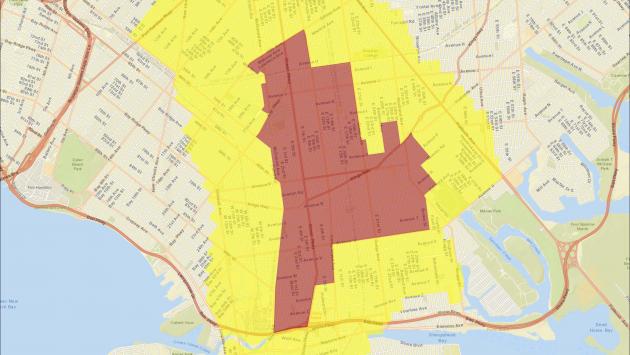
The Cluster Action Initiative, announced on Oct. 6 by Gov. Andrew Cuomo, is a new way of classifying COVID-19 cases in New York, with a focus on clusters of high cases that might spread to neighboring communities.
This new initiative corresponds areas of outbreaks to colors; with red being the highest risk, orange being a medium risk and yellow being only a slight risk.
As cases in New York — and around the country — continue to rise, this initiative aims to stop outbreaks at their source communities while also preventing the spread to neighboring areas.
“A cluster is just that — it’s a cluster of cases, a high density of cases, and it seeps and grows from that cluster almost in concentric circles. Drop a pebble into the pond, the pebble goes in, then there’s one ring, two rings, three rings and the rings continue across the pond. When you see the cluster, you have to stop it at that point,” Cuomo said in the Oct. 6 press release. “Our strategy is to crush the cluster and stop the spread.”
Once a cluster is identified, the “most dramatic action” will be taken within that cluster area, with additional action taken in the areas surrounding that cluster and “precautionary action” taken in the outlying areas.
Receiving “dramatic action” is the cluster area, or red zone. Restrictions will include prohibiting mass gatherings, closing in-person education, enforcing takeout only for restaurants, closing all businesses except for essential businesses and limiting “houses of worship” to a 25% capacity, or 10 people maximum, according to Gov. Cuomo’s press release.
Orange zones will receive additional action, including limiting mass gatherings to 10 people, closing in-person education, limiting restaurants to outdoor dining only, closing “high-risk non-essential businesses, such as gyms and personal care” and limiting houses of worship to a 33% capacity, or 25 people maximum.
Yellow zones will receive the least restrictive precautions, including limiting mass gatherings to 25 people, requiring in-person education to mandate weekly testing for students and staff, and limiting houses of worship to a 50% capacity.
Determining what zone a community falls in depends on a few factors. Areas are placed in different tiers depending on the population of the county they are in, and each tier has its own guidelines for when an area becomes yellow, orange or red.
Ulster County, encompassing New Paltz, falls in tier two. For an area to be labeled as a yellow zone, it must have a “seven-day rolling average positivity above 3% for 10 days” and have “12 or more new daily cases per 100,000 residents on a seven-day average.” The seven-day rolling average positivity rate would have to be 4% to be considered a yellow zone and 5% to be considered a red zone.
These new guidelines mean that even if a town like New Paltz has a relatively low COVID-19 case count, they could still be considered as an orange zone if the neighboring community is deemed as a cluster or red zone.
Being deemed a red or orange zone would mean SUNY New Paltz would be required to move to a fully-remote learning style.
While cases continue to rise, this new way of addressing outbreaks will hopefully limit the spread of cases.

